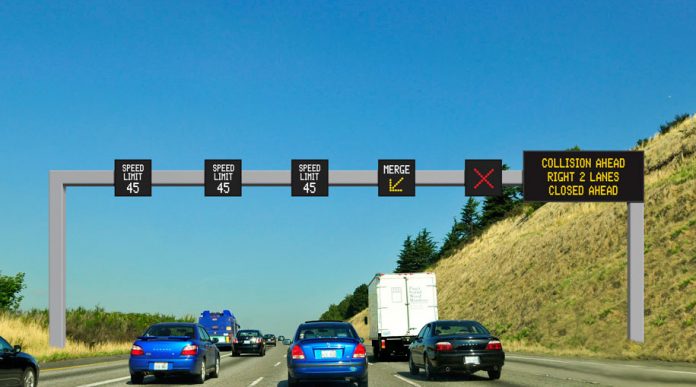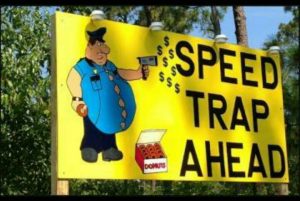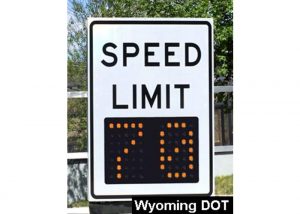Guest Post by Eric Peters

Even better – from a certain point-of-view – than a radar trap based on an under-posted speed limit is a radar trap with a changing speed limit. One that can be dumbed-down at random and with no prior notice, at the whim of the same government workers who enforce the limits and profit from that enforcement.
It is my sincere desire to provide readers of this site with the best unbiased information available, and a forum where it can be discussed openly, as our Founders intended. But it is not easy nor inexpensive to do so, especially when those who wish to prevent us from making the truth known, attack us without mercy on all fronts on a daily basis. So each time you visit the site, I would ask that you consider the value that you receive and have received from The Burning Platform and the community of which you are a vital part. I can't do it all alone, and I need your help and support to keep it alive. Please consider contributing an amount commensurate to the value that you receive from this site and community, or even by becoming a sustaining supporter through periodic contributions. [Burning Platform LLC - PO Box 1520 Kulpsville, PA 19443] or Paypal
-----------------------------------------------------
To donate via Stripe, click here.
-----------------------------------------------------
Use promo code ILMF2, and save up to 66% on all MyPillow purchases. (The Burning Platform benefits when you use this promo code.)
It’s called Variable Speed Limits and the Feds – through the Department of Transportation – are not only encouraging the states to adopt them, they are bribing them to adopt them. Cue Dr. Evil voice – one billion dollars mulcted from taxpayers has been earmarked to mulct taxpayers a second time via “pilot” VSL programs – and at least nine states (New Jersey – naturally – but also Ohio, Wyoming, Oregon, Utah, Florida, Minnesota, Washington and Georgia) are already deploying VSL.
You may have already seen Variable Limits in action. Instead of the usual metal sign with whatever the number chosen at random happened to be at the time the sign was put up silk-screened permanently on it, an electronic sign – with a display that can be changed, literally, at the touch of a button.
At 4:30 p.m., the sign reads – as an example – 75 MPH. But at 4:33 p.m. (and just after you drove past it) the Oz who controls the sign decides the new speed limit shall be 65 MPH. Blink. Just like that, your moment-ago legal rate of travel has become illegal “speeding” – and not only are you subject to a ticket you are more likely to get a ticket because – as far as you know – you aren’t “speeding” and so why worry about that cop up ahead pointing his radar gun at you?
This gets into interesting turf.
The first is the element of intent, formerly a necessary thing to establish culpability; the idea that a person violated the law on purpose.
But in order for this to be a viable moral concept, the law has to be knowable. A law that is changeable is unknowable. It is – effectively – no law at all. It is the codified whim of whomever has the power to punish people for violating laws that are fundamentally unintelligible.
Kind of like tax law already is. If they want your money, they’ll find some justification to take your money. It’s not about “the law.” It’s about who has power – and is willing to use it.
The second thing has to do with the way speed limits are posted – or rather, are supposed to be posted.
What’s supposed to happen before a speed limit is posted is a traffic study. Monitors set up that observe and record the free-flow speed of traffic on a given stretch of road. The posted limit is supposed to be based on the free-flow speed of 85 percent of the traffic observed – the 85th percentile speed – so that most traffic isn’t “speeding.”
The idea being that most people naturally drive at reasonable speeds and that speed limits should parallel the organic flow of traffic.
That actually is the law.
It’s called the Manual on Uniform Traffic Control Devices (“uniform” italicized to emphasize uniformity – that a thing is consistent, the same), issued by the U.S. Department of Transportation to “… establish national standards for all traffic control devices, including road markings, highway signs and traffic signals.”
States and counties and cities and towns are supposed to use the MUTCD to set speed limits in accordance with the 85th percentile rule but that runs counter to the collection of revenue via “speeding” tickets, which is a major racket for states and counties and cities and towns all across the country.
Some towns and counties and even cities – Washington, DC is one – notoriously derive a shockingly large percentage of their annual budgets via roving road taxation; they police for profit. Which you’d think would register with people as a problematic conflict of interest, as regards their interests.
It’s remarkable that it – generally – does not.
Laws that are clearly designed to separate them from their money by dint of legislatively putting eight out of ten and usually more like nine out of ten people into the category of “violator” – by dint of limits set purposely below reasonable speeds, let alone the 85th percentile speed.
This Variable Speed Limit thing will net that tenth person. It will open up a whole new revenue stream by making it possible to issue “speeding” tickets at will to any driver – unless we all drive well below whatever the limit-for-the-moment happens to be. If the electronic sign says 65, drive 55 – in order to be within the safe zone (as far as being a target of the road tax) when Oz pushes the button and the limit drops to 55.
Now imagine Variable Speed Limits tied in with automated speed enforcement – the camera systems already in place in many states that don’t even require an armed government worker to do any work to separate you from your cash.
You unknowingly transgress the just-changed limit by 10 MPH and are duly processed by the speed camera a mile past the sign. A week or so later, you get an extortion note in the mail.
Pay up, chump.
Most of these automated ticket spewers are not subject to the once-mandatory rules of evidence, either. That is, it’s no longer the burden of the government to prove you did something but rather your burden to prove – to the satisfaction (usually, not) of an “administrative” bureaucrat that you did not.
All of this is already reality in the UK – the source waters for many of our policing for profit (and police state) woes.
As far as what can be done?
Just as it’s very sound policy to have a really good tax lawyer on retainer to deal with the IRS, you might want to acquire a really good radar detector. With speed limits changing at the whim of Oz, you might want to know where his flying monkeys might be lurking.




Love the embedded YouTube video. Would like to know how that fellow made out with his appeal.
I was picked off by one of these remote traffic cams late one night leaving BWI for speeding in a construction zone where no construction was being done and with few other vehicles on the road. Received the ‘citation’ by mail. I reluctantly paid it as I was not about to drive 90 miles to contest it.
Traffic cops have become revenue agents no doubt.
Great Post Eric.
I doubt it would have done much good to contest it since you admit you were speeding.
These automated cameras are primarily a profit generator for municipalities, etc. They are minimally concerned with traffic safety. These light cost approx. $50,000 each and I believe some companies have a profit sharing plan were the profits generated are split between the camera and municipality. Therefore there is no upfront cost for their installation. There are single cameras which generate over $250,000 per year in the state of NJ (I lived there for 3 years). What a scam!
The profit sharing between municipalities and the
corporations that administer the traffic cameras for them is often more like 80% to the company and 20% to the city. Xerox is one such corp. Some people in Cleveland, Ohio organized to successfully terminate the traffic camera system there. It was not easy, but does show you what is possible when you work with your families, friends, and neighbors.
Well, driving down the 76 or 476 in pennsylvania, cant remember which, I happened upon a stretch where a speed limit of 60 and a speed limit of 40 were posted in a construction zone facing me on opposite sides of my lane. Over and over for miles. And which limit do I drive then? Not to mention there was in fact no construction going on at all.
The construction signs take precedence.
I love Eric Peters, but sometimes he forgets to mention a few things. Variable speeds are not just for generating revenue. They are designed to help traffic flow smoother and avoid the accordion effect on freeways.
In my town, variable speed signs were installed on a 4-lane freeway two years ago. Data shows that they increased the capacity of the freeway by 19% due to a smoother flow of traffic. This is a good thing.
Now Oregon is a bit different then the other corrupt states to the east. Our variable speed signs say “Advisory Speed.” In other words, you can’t be ticketed for exceeding the variable speed. You can only be ticketed for exceeding the normal posted speed. Seems like a good solution to me, but then it would cut severely into the revenue generation of other states.
Sometimes living in a sea of blue, liberal wing nuts isn’t so bad.
England had a brilliant system of ADVISORY variable limits on some Motorways and the algorithm was usually pretty good. If you went down from 70 to 60 then 50 in areas of congestions, the rubber band effect of 70-60-50-40-30-20-30-40-50-60-50-40-30-etc. was markedly reduced and travel was smoother at around 45-55 actual travel speeds.
NOW these are becoming enforced speed limits to collect millions of British Pounds from safe driving motorists. It has turned a good traffic control system into a for-profit racket. Mr. Peters clearly understands how this vicious for-profit racket system works.
James C. Walker, National Motorists Association, frequent UK visitor to see family